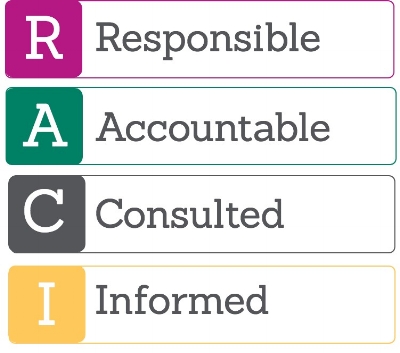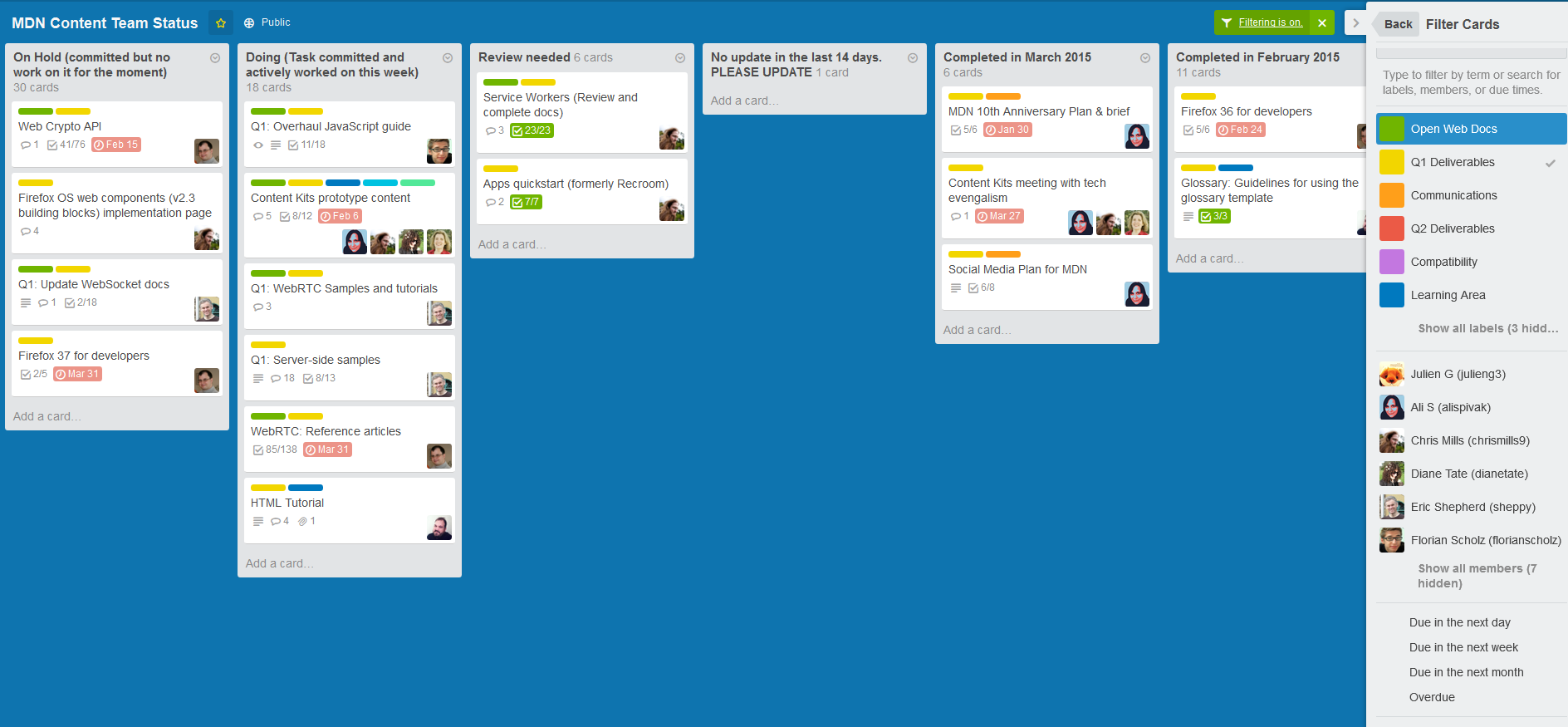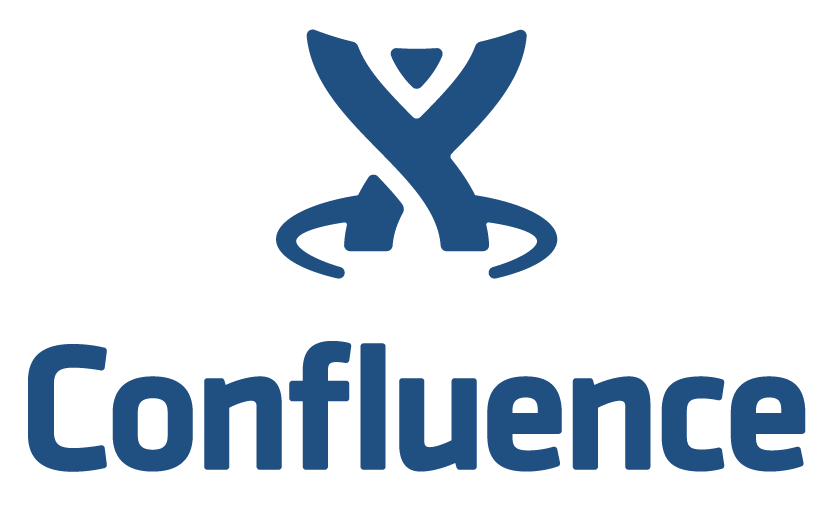I used to LOATHE project management.
The very mentioning of the words sent corporate shivers up my spine. My impression of a project manager was someone constantly chasing other people to make sure they’d done their work.
But after working for a corporate company, I’ve come to truly respect the power of project management. And the bigger the project, the more project management muscle you need to call into action to make it successful.
In this article I’m going to break down my best project management key learnings. I still consider myself young in the game, so I’m going to continually update this guide over time.
What Is Project Management?

Project management is more than just deciding what needs to be done and who’s going to do it. It’s about managing deadlines and priorities. It also involves a heck of a lot of problem solving.
It’s about unifying teams and departments together, it’s about resolving disputes and differences of opinions. It’s about having clear briefs, expectations, and delegated tasks, and then reviewing progress as you go.
In essence, it’s about setting a goal, planning how you’re going to achieve it, and then working to bring all of the moving parts into the fruition of the wider objective.
Managing Priorities For Your Project

When I went for my first job at a big business, the interviewer across the table said something that stuck with me…
She said that in the position I was going for, “there’d be a lot of spinning plates to manage.” It was a great way of putting it, and now I know exactly what she means.
Project management is more complicated than just “here is our deadline, let’s get everything done before then.” Firstly because there might be more than one deadline within a project. And secondly, you might be managing multiple projects within a single department.
Because of this, you’re often forced to make judgement calls about priorities, based on what’s going to have the greatest overall positive impact. On top of this, priorities can change if something goes wrong, or an unforeseen issue makes a deadline impossible to meet.
Managing the priorities themselves isn’t hard. It’s difficulty often lies in determining what the priority is and coming to a mutual agreement with stakeholders about it. On top of this, the challenge also amounts to dealing with the stress of high priority tasks and tight deadlines.
Managing priorities (sometimes on the fly) requires flexibility, and a willingness to collaborate and delegate. We often seem precious about the tasks within our responsibility, because they reflect our performance – and our performance affects our bonuses and salary.
But sometimes it’s key to consider the big picture. In most cases, the success of the project will reflect better on you than the effect on any one individual task. In short, be willing to delegate.
Unifying Stakeholders For Your Project

Managing stakeholders can become, for lack of a better word, a “fuck show.” I learned this phrase from a South African guy who was working and living in Chicago, and whose apartment I was AirBnBíng in.
PS: “AirBnBing”, is that the right word?
When stakeholders come into the picture, that’s where things get messy. For example, in the company I currently work for, I work as part of the content team. We write, edit, and curate content which goes across our site, blog, and marketing campaigns.
However, to write content for our marketing campaigns I also have to liaise with the rest of the marketing team, as well as our digital performance team. When it comes to our blog writing, I also have to liaise with our SEO team, marketing manager, and commercial managers.
For any content that goes on the website, I have to liaise with product managers, and our user experience team.
PLUS. For every single one of these areas, I also have to work alongside our external creative agency. And once all of the content is created, we have to get legal approval.
Do you see what I mean by “fuck show” now?
And this isn’t even nearly as complicated as other businesses out there. Sure, this is a little more complex than your average, small to medium sized business. But this kind of interaction and stakeholder matrix is pretty symbolic of most big businesses.
Here’s what I’m getting at…
You need to be able to bring people together. You need to foster an environment of encouragement, contribution, communication, and ideas.
Now, some people are better at this than others. I’ve found from experience that you’ll often pick up a lot of this from senior members of your department. But even then, I’ve just found that, like I said, some people just have a knack for this.
I’m going to talk more about this in the RACI section of this article. But as a closing thought here, I can’t stress the importance of fostering GOOD and POSITIVE relationships with external stakeholders.
How do you do this? Well firstly, I know it sounds simple, but try not to piss them off. Avoid sending any angry or demanding emails. If feasible, get off the computer and go and walk over to the their desk. Ask if they want to get coffee. Smile at them and ask them how their day’s going, or how their weekend was.
Great working relationships are about more than just work. They’re people just like you. No, you don’t need to become their best mate. But becoming friendly with your stakeholders (in a professional way), will set you in good stead when it comes to managing these relationships. And in turn, getting shit done!
The RACI Model

The RACI model is a system for defining stakeholders. It can be used for a specific project, or within the business as a way of defining operations.
The RACI model is an acronym which stands for:
- Responsible
- Accountable
- Consulted
- Informed
I first learned this model from my supervisor at the time. Because our day to day tasks often rubbed shoulders with other teams, it was critical to know who needed to be informed and consulted etc.
Here’s what each means…
Responsible
This is the person responsible for actually doing or implementing the task.
Accountable
This is the person who gets in trouble if things go bad. They’re ultimately leading the charge with the project and delegating responsibility.
Consulted
Who do we need to ask for permission, or get feedback and input from on certain things.
Informed
Who needs to be kept in the loop, and who needs to be across the details.
Essentially, every company should have RACIs defined for every department. This becomes important as you dive deeper into your project.
I’ve never worked on a project that didn’t in some way interact with another department or team who wasn’t directly part of the project. This occurs for the obvious reason that a business isn’t a set of closed systems, but a group of dynamic parts that rely on and interact with each other at all times.
For example, at the tech company I work for, it’s almost impossible to make on-page changes to optimise sales and conversions, without rubbing shoulders with our UX team. Two different departments (Marketing vs. User Experience), and yet we continually interact.
So defining who has what “jurisdiction” and who needs to be either consulted or informed on certain tasks or decisions is essential.
Creating Cross-Department Project Advocacy
This relates closely to the idea of unifying stakeholders. Here’s how it’s different.
Unifying stakeholders relates to the people who are directly involved in your project, or those who’ll be directly affected. However, creating cross-department advocacy is when you muster support from people and teams who don’t have direct involvement in your project.
How is this achieved?
I believe this is best achieved in two ways. The first is by creating excitement around your project, and sharing with others how it’s going to positively impact their departments too. Everyone likes to contribute and feel needed, and give other departments a chance to can create advocacy.
And secondly, it’s achieved by transparency and visibility. I mean this in a literal sense. For example, using tally’s and scoreboards throughout the office. If you can see a team in your business trying to reach a goal, and you’re a good person, you should feel a desire to help them reach it.
If achieving the goal is good for the business, then it’s good for you (and others). SO using these two strategies (building excitement, and creating visibility), can create cross-department advocacy.
What does this look like?
It looks like people adding support, resources, ideas, and just help in general to your project. Which in turn can multiply the speed and impact of your goals achievement. So it’s a win-win.
In-Person Communication Vs. Faceless Email
In short, when it comes to successful project management, email is awful. Even as a communication tool it sucks. But we’ll talk about this in the software section.
Here’s the deal. Navigating, discussing, and giving feedback on aspects of large projects is something that’s always better done in person than email.
Getting up from the desk and walking over to talk to the required person is usually the easiest and fastest way to get the info you need.
This is best for complex conversations, or ones where you imagine there’s going to be a lot of back and forth. This is where you’d simply book a meeting.
For these discussions email is inefficient. It doesn’t allow you to explain the nuances of what you’re saying, or see if the person you’re speaking to is confused.
In short, talking in person is just faster. It also has the doubled effect of building your relationship with that person. And if they’re a key stakeholder, then it could further your ability to create advocacy, and rally support from their and their team.
Getting Clear On Project Action Steps & Deliverables
If you work in a busy company then your time is precious. And while meetings are essential before, during, and after a project, they can burn up your time.
A day with four half an hour meetings is a day with (at least) 2 hours less time to get things done. If you work eight hours in a day, and minus those two hours plus another hour for lunch, that only leaves you with five hours.
The worst meetings are the ones where you don’t come out with any clear action steps. At the beginning of a project, it’s super important to clarify who needs to do what, and by when.
So at the end of every meeting, do a quick recap of who’s doing what. If you’re unclear about exactly you need to do, then make sure you ask before the meeting is over.
It can help to get action steps and deliverables (with deadlines) in writing. This can take the form of a 1-3 page brief. Then you take to take the agreed brief and digitise it into whatever project management software you’re using: whether it’s Google Drive, Asana, Trello, Jira, or other.
Seeking Advice From Your Elders
Your supervisors, department heads, and team leaders are there for a reason. Most companies don’t simply want them to manage you, they want you to assist in your growth.
These people are incredible sources of knowledge and wisdom. If you have doubts about something, or want to get insight on solving a problem, or more effectively tackle a task, don’t hesitate to reach out to them.
If they’re particularly busy (as most senior staff members are) then it’s unlikely you’ll get much time with them. But usually 10-15 minutes is all you’ll need.
Also, showing that you value their support and advice will help build your relationship. And you never know when that relationship might pay off down the road.
Managing The Project Phases
It’s critical to map the phases and milestones of your project.
As mentioned before, you need to know who’s responsible for delivering what and when. You also need to know what happens when those deliverables are provided.
Everyone needs to be on the same page about what happens when you move from one project stage to the next.
For example, some project stages I’ve worked on looked like:
Stage 1: Brief in the marketing campaign
Stage 2: Start working on the deliverables
Stage 3: Deliver the deliverables
Stage 4: Meet and monitor the progress of deliverables
Stage 5: Close project and retro the experience
When each of these phases end, something should happen. And by that I mean, there should be some form of centralised communication between all participants, as well as with the relevant stakeholders.
Centralisation is the key theme here (without meaning to sound too corporatey). Essentially, all parts of the project should move as one.
So during your project, and as you move through each phase, it’s important to bring everyone together and recap on where you’re at.
That way if any people or parts of the project have fallen behind, or if circumstances have changed, then deadlines can be rearranged, or extra resourced and support allocated where necessary.
My Favourite Project Management Tools
My criteria for a great project management tool being…
It’s simple and easy to use
It’s transparent
It allows for collaboration
Trello

Trello is great for managing projects and tasks that have lots of stages or phases. As a content marketer I particularly love it because it allows you to turn your content creation process into a production line.
I also allows for a high level of centralised visibility around your project – which is SUPER important. Especially if you have a complicated stakeholder system, and several rounds of approval to go through.

Confluence

Confluence is a platform that allows you to create knowledge bases around your tasks. In other words, it allows you to create and document working procedures.
These are awesome because they allow you to build a repository of knowledge around your day to day tasks. Which can help in solving future problems. It can also help when it comes to scaling the production of certain tasks.
For example, part of my role involves hiring freelance writers to produce content for the businesses website. To ensure we maintain quality as we scale the number of writings working for us, and the volume of work being produced, I created detailed style guides in Confluence. These were then exported and sent to each writer as a PDF.
We also created detailed documents for internal use that listed out all the details of managing content through the approval process. Which means that as we grow our team internally, we can increase the efficiency of training new staff. Essentially, preventing them from asking me questions 24-7, as everything is listed and answered inside Confluence.
Google Drive
Put simply, Google Drive is AMAZING when it comes to file sharing. It’s also great for managing versions and iterations of written documents.
The file sharing creates high visibility and centralisation, and as most people use Gmail, it just keeps things more efficient as most people are familiar with the technology.
Slack

In my opinion, Slack is king when it comes to workplace communication. It’s an instant messaging web and desktop app.
One of my favourite features is that it allows you to create groups, or channels. These can be team specific, project specific, or just general.
For example, on my work Slack, we have channels for content, for SEO, for Performance marketing, for lunches and events, and for sharing random giphys and photos.
Just on the fun side, one of my favourite features is their secret Slack commands.
If you need an answer quickly, and don’t want your message lost in someone’s inbox, then Slack is the way to go.
The downside when it comes to project management and productivity, is that Slack is addictive. You have instant access to your co-workers, including your closest friends at work, making it easier to muck around.
But essentially, we all need that in our day to make it enjoyable and lower stress. So I’m still going to consider that one a positive.
You Might Also Like:
- How To Land Your Dream Job Fast
- 6 Fatal Job Hunting Myths
- Big Businesses Vs. Small Businesses: Who’s Better To Work For?
- How To Have Rock-Solid Confidence In Job Interviews
- Complete Guide To SMART Goal Setting

Will Vaughan is the Founder & CEO of Your Career Mastery. He’s dedicated to helping young professionals discover and land the job of their dreams using a mix of proven strategies, tips, tools, and mindsets. He currently works as a Content & SEO manager for a 100 million dollar tech company in Melbourne, Australia.

